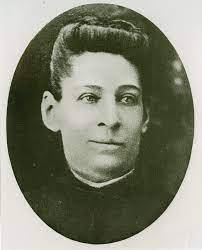When 'Consumption' Came to the West
Looking Back at Our History of Tuberculosis Treatment After 125 Years of Care
 As European immigrants arrived in America, the disease known as "consumption" was becoming widespread. The dramatic weight loss of patients with this disease made it seem as though they were being consumed. Doctors did not know what caused it, and there was no cure.
As European immigrants arrived in America, the disease known as "consumption" was becoming widespread. The dramatic weight loss of patients with this disease made it seem as though they were being consumed. Doctors did not know what caused it, and there was no cure.
However, on March 24, 1882, microbiologist Robert Koch, MD, announced he had discovered the culprit: a bacterium called Mycobacterium tuberculosis. By this point, consumption, which we now call tuberculosis or TB, was responsible for the death of one out of every seven (Opens in a new window) (Opens in a new window) people living in the United States and Europe.
The identification of the bacteria was a major step toward battling the illness. Tuberculosis causes a persistent and sometimes bloody cough, along with a fever and other symptoms. At the time, however, medical treatments for the disease were limited. Various "cures" had been attempted over thousands of years. The "royal touch (Opens in a new window) (Opens in a new window)" was probably one of the most counterproductive. During the Middle Ages, people would line up in large numbers, believing that a touch from a king or queen could cure them of TB.
The treatments of the 1800s were more helpful. Doctors at the time believed that abundant sunshine and drier climates could improve TB symptoms. This theory caused patients to flock to places like Denver, Colorado.
 Not everyone in Denver could afford months or years of medical care though. In the late 1800s, there were many people living in poverty without any options for TB treatment. Frances Wisebart Jacobs (Opens in a new window) (Opens in a new window), a philanthropist and leading member of Denver’s Jewish community had an idea. She realized there was a desperate need for shelter and care. She started a movement promoting free TB treatment for the needy. "I know that whenever women lead in good work, men will follow," Jacobs reportedly said (Opens in a new window) (Opens in a new window).
Not everyone in Denver could afford months or years of medical care though. In the late 1800s, there were many people living in poverty without any options for TB treatment. Frances Wisebart Jacobs (Opens in a new window) (Opens in a new window), a philanthropist and leading member of Denver’s Jewish community had an idea. She realized there was a desperate need for shelter and care. She started a movement promoting free TB treatment for the needy. "I know that whenever women lead in good work, men will follow," Jacobs reportedly said (Opens in a new window) (Opens in a new window).
The local community proved Jacobs right. The successful campaign led to the foundation of the National Jewish Hospital for Consumptives. The hospital opened in 1899 with the motto “None who enter shall pay; none who can pay shall enter.”
The spirit of compassion and charity in these words continues to inspire our doctors 125 years later. National Jewish Hospital for Consumptives would eventually become National Jewish Health. We have expanded our areas of care to include numerous respiratory and related diseases. However, as we celebrate our 125-year milestone, we honor our origins and the doctors and nurses who treated patients at a time when the stakes were just as high but the resources were much more limited.
In the late 1800s and early 1900s, before a cure for TB was discovered, our patients received the standard treatment of rest, fresh air and healthy food, while our physicians conducted research to learn more about the disease. They also performed various procedures, including pneumothorax, which was first performed at our institution in 1918, four years before it was formally introduced in the U.S. This procedure forced the lung to collapse. And the resulting lack of oxygen in the collapsed lung kept the TB from growing.
Effective antibiotic treatments for TB eventually emerged in the mid-20th century. Scientists discovered that, when taken together, the drugs para-aminosalicylate, isonicotinic acid hydrazide and streptomycin could eliminate TB in 80-90% of patients. But the side effects were severe, and it was important for our physicians to help test the effects of antibiotics on TB. For instance, Garner Middlebrook, MD, developed a lab test to determine how much medication was enough for each patient. Adaptations of that test are still in use today, and Dr. Middlebrook is considered one of the pioneers of tuberculosis chemotherapy.
After the introduction of these antibiotic treatments, patients originally needed 18-24 months of treatment for their TB to be cleared. However, new drugs were later developed that cut this recovery time by more than half (Opens in a new window) (Opens in a new window). Today, TB is highly curable, and deaths from TB are extremely rare in the United States.
Drug-resistant strains of the bacteria still pose a threat. Our experts continue the hospital's 125-year tradition of keeping TB at bay. Pulmonologist Charles Daley, MD, for instance, has been researching the management of multidrug resistant tuberculosis, whose rates have been increasing (Opens in a new window) (Opens in a new window) over the past few years. We also have invested considerable resources into battling related nontuberculous mycobacteria (NTM) infections.
Our longstanding expertise with TB and related infectious diseases continues to be an important part of what makes National Jewish Health such a valuable referral center for patients all over the world. And, while considerable advances have been made in the treatment of TB over the last century, our doctors are always working toward the next big achievement, one that we can look back on with amazement 125 years from now.
